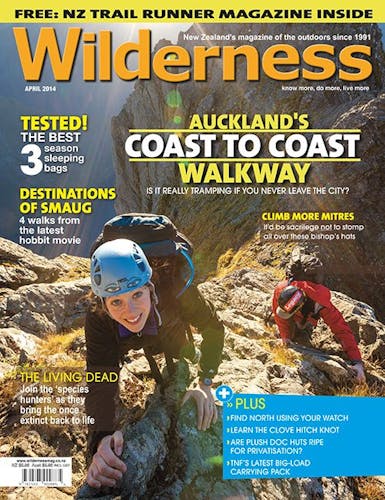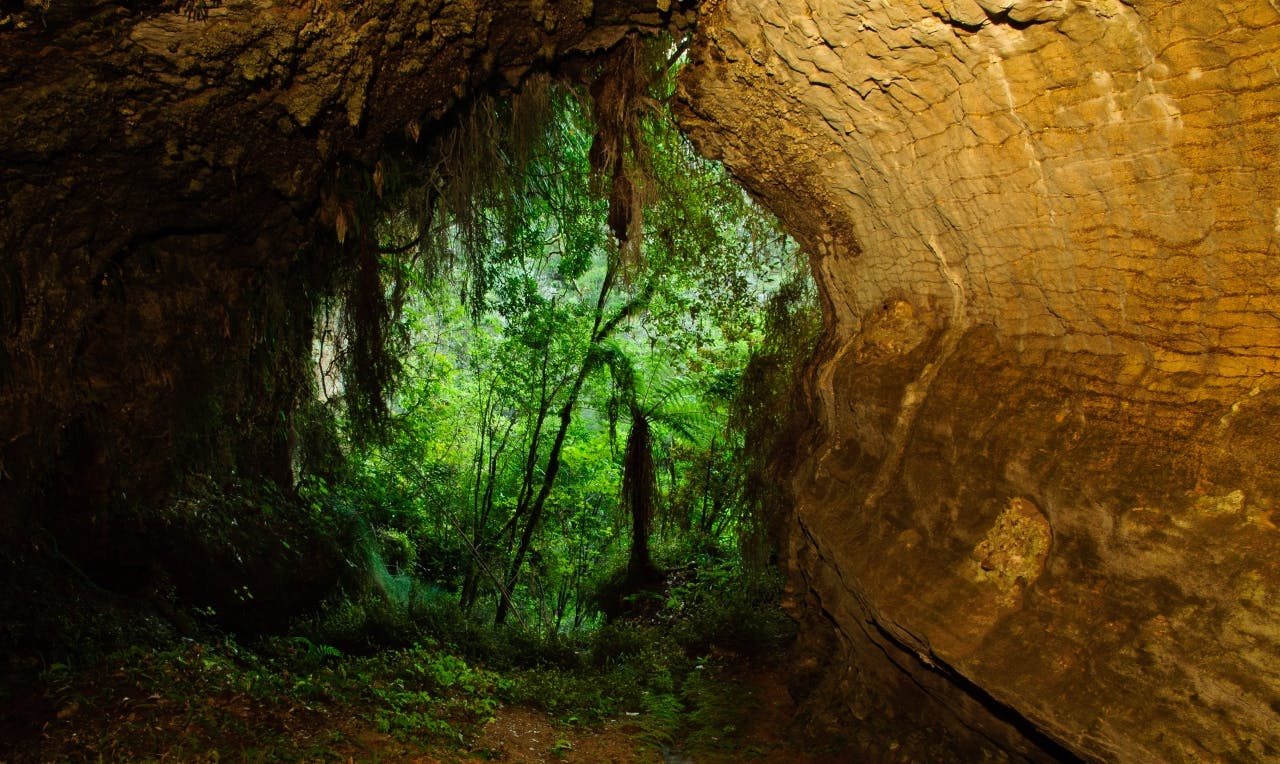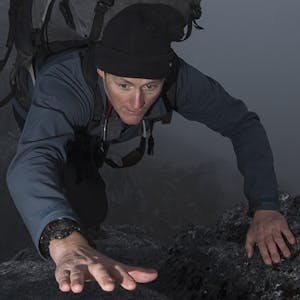- Time
- 2hr return; half day for the round trip via the upper Nile River
- Grade
- Easy
- Access
- Four Mile Road is 3.5km south of Charleston. Drive down the gravel road and park on the left just before the road descends to the Nile River
- Map
- BS20
- Notes & Map
- Hole in the Hill, Westland (pdf, 489 KB)
Hole in the Hill, Charleston, West Coast
The West Coast is renowned for its dramatic karst scenery. For me, what really stands out is its limestone arches. In the upper Oparara Basin near Karamea, tannin stained rivers, the colour of tea, wind their way though the dense rain forest and caves. Moria’s Gate, Honeycomb and the Oparara Arches are regularly visited and photographed. There is however one other arch tucked away. It’s little known, seldom visited and is a long kept secret of local trampers and cavers.
The Hole in the Hill arch is in a rugged area of karst inland from Charleston. The land is administered by the Department of Conservation and lies between two parts of Paparoa National Park: the large, rugged, bush covered area inland from Punakaiki, and the fragment containing the Metro Cave in the south.
It was likely left out of the national park due to its potential to generate revenue for the coast through logging and mining. While there has been selective logging in the area, a local cement company’s plan for a large quarry has been abandoned. Hopefully information published (such as this route description) will aid its recreational use, appreciation and continued protection.
Perhaps the greatest difficulty on any trip to caves and arches in the West Coast bush is finding them. The trail to Hole in the Hill begins 5km down Four Mile Rd and, initially, follows a series of muddy ditches northwards (a pair of gumboots wouldn’t go amiss). Look for a vague track heading left, which is marked with reflective markers. Don’t miss it, or you will disappear into a vast area of bush and karst, likely never to be seen again.
The trail descends to Makerikeri Stream and the Hole in the Hill. On either side of the track are damp, ominous looking shafts (alluring if you’re a caver). Water trickling into the soluble limestone has dissolved the rock, leaving behind tomos. These caves can be extensive and often contain sub fossil remains of New Zealand’s extinct birds. One known cave even has whale vertebrae bridging the passage, preserved in the limestone.
The Hole in the Hill is grand. The arch towers over the Makirikiri Stream. It’s 15m wide and some 80m high impressive by any standards. Light streams through from the openings at each end. On either side, up high and inaccessible, are cave entrances – perhaps unexplored. These have been formed by the stream as its course has changed over time. The arch itself is likely to be the last fragment of a cave system which collapsed long ago.
Downstream from the Hole in the Hill, the Makirikiri joins the Nile River. It’s about an hour’s walk to the confluence. There are no formed trails, and you feel like you’re the first person that’s ever walked there. It is easy travel in open beech forest. Stay on the true left. From here you can either head up the Nile, and back to the car park, or walk down the River to the Metro Caves railway and car park. With this option you would have to do a shuttle or try your luck hitching (a challenge on quiet gravel roads).
The trip is a good day out and travels through some impressive country. The area will hopefully, one day, gain the protection it deserves and be incorporated into Paparoa National Park. In the meantime, it’s nice to visit an accessible area with a wild feel and where you know you will have the place to yourself.
– Neil Silverwood








